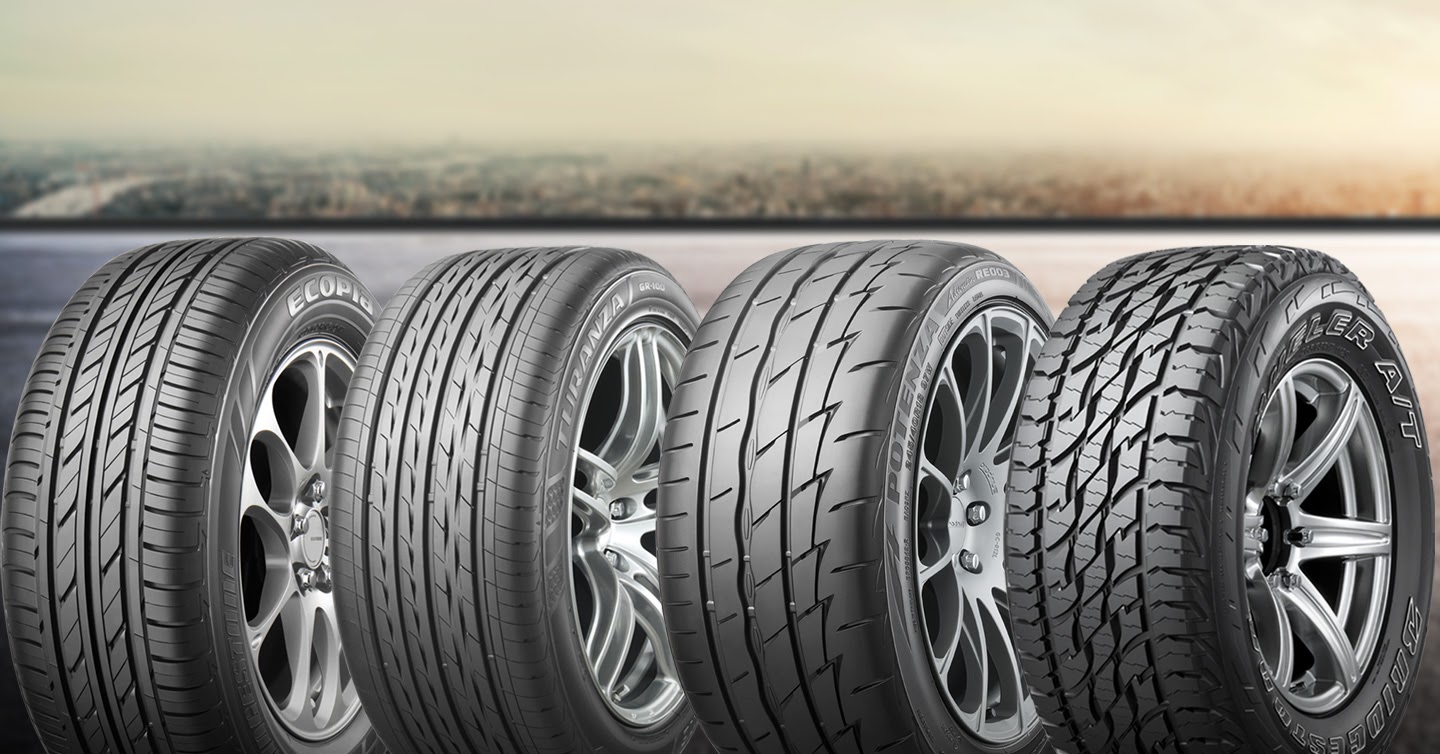
Tires are so much more than black rubber rings that support your car weight and keep it running on the road. While the role of tires is true to a small extent, not all of them are similar. Tires are a technology engineered in many forms and designs to suit different needs and for different classes of passenger vehicles.
Different types of tires
Performance tires
Designed for car enthusiasts who demand maximum precision. Performance tires like the Bridgestone Potenza range offer sporty handling, fast responsiveness, and superior grip.
Touring Tires
Designed for the everyday driver and their families who prioritize comfort and silence during their rides. Touring tires like the Bridgestone Turanza range offer a smooth, cushiony, comfortable, and quiet ride in both wet and dry conditions.
Fuel-efficient tires
Designed for the eco-conscious and cost-conscious driver who wants low fuel consumption and low carbon emissions when driving. Fuel-efficient/eco tires like the Bridgestone Ecopia range offer the most mileage per liter of petrol and the most savings at the pump without compromising comfort.
Off-road tires
Designed for drivers of trucks, Crossover Utility Vehicles (CUVs), and Sport Utility Vehicles (SUVs) who drive in both on- and off-road conditions while enjoying a comfortable ride. Off-road tires like Bridgestone Dueler range offer performance and durability in diverse road terrain.
Tread Patterns: Not all tread patterns are identical.
Symmetrical tread pattern
- The least technologically advanced pattern. Symmetrical tires have the same tread pattern on both halves, allowing them to be mounted in any direction or position.
- Suitable for small and medium-sized passenger vehicles and delivery trucks.
Asymmetrical tread pattern
- This pattern offers greater performance diversity by combining the various benefits of different tread patterns for superior performance.
- Asymmetrical tires have a different tread pattern on each side and have to be mounted correctly with a specific out-facing side.
- Suitable for all passenger vehicles thanks to their multiple positive characteristics, which include superior grip in both wet and dry conditions.
Directional tread pattern
- Provides the most superior handling amongst the three tread patterns.
- Directional tires need to be installed in line with the rolling direction, maximizing its water dispersal capabilities.
- Suitable for high-performance and sports cars that travel at high speeds, as directional tires commonly feature a more performance-oriented compound